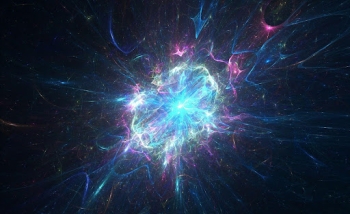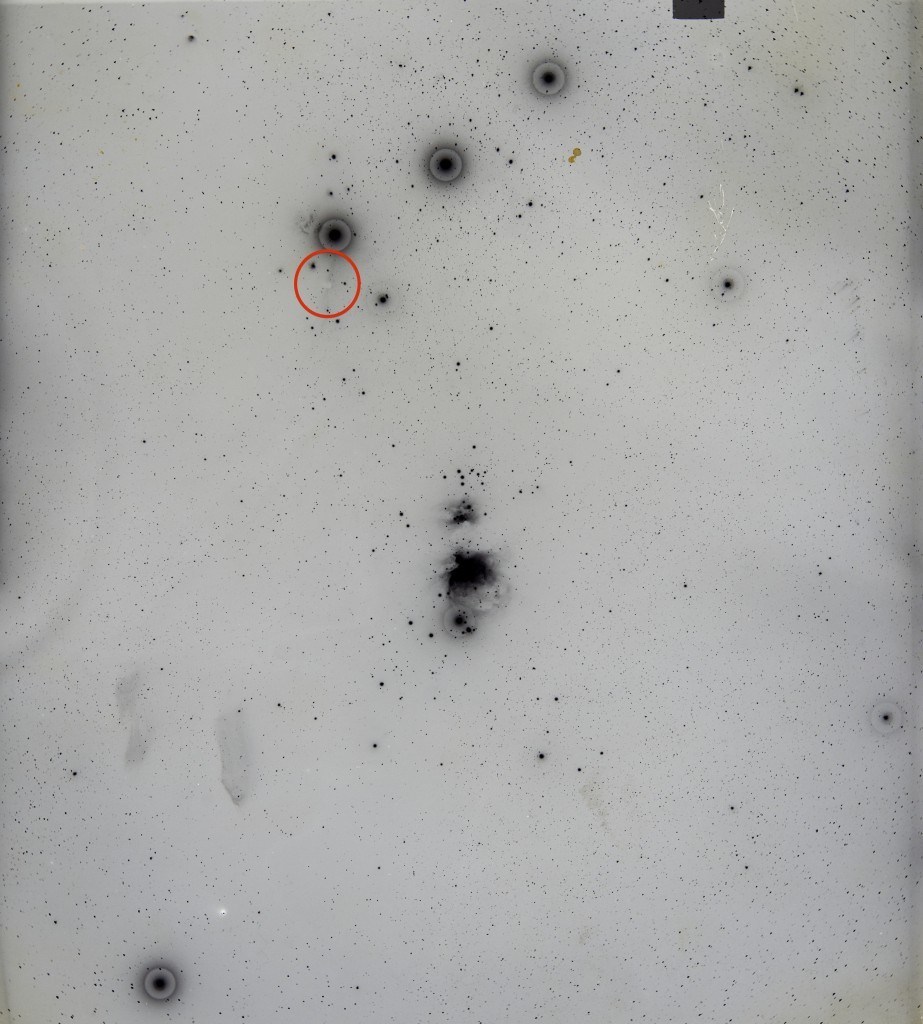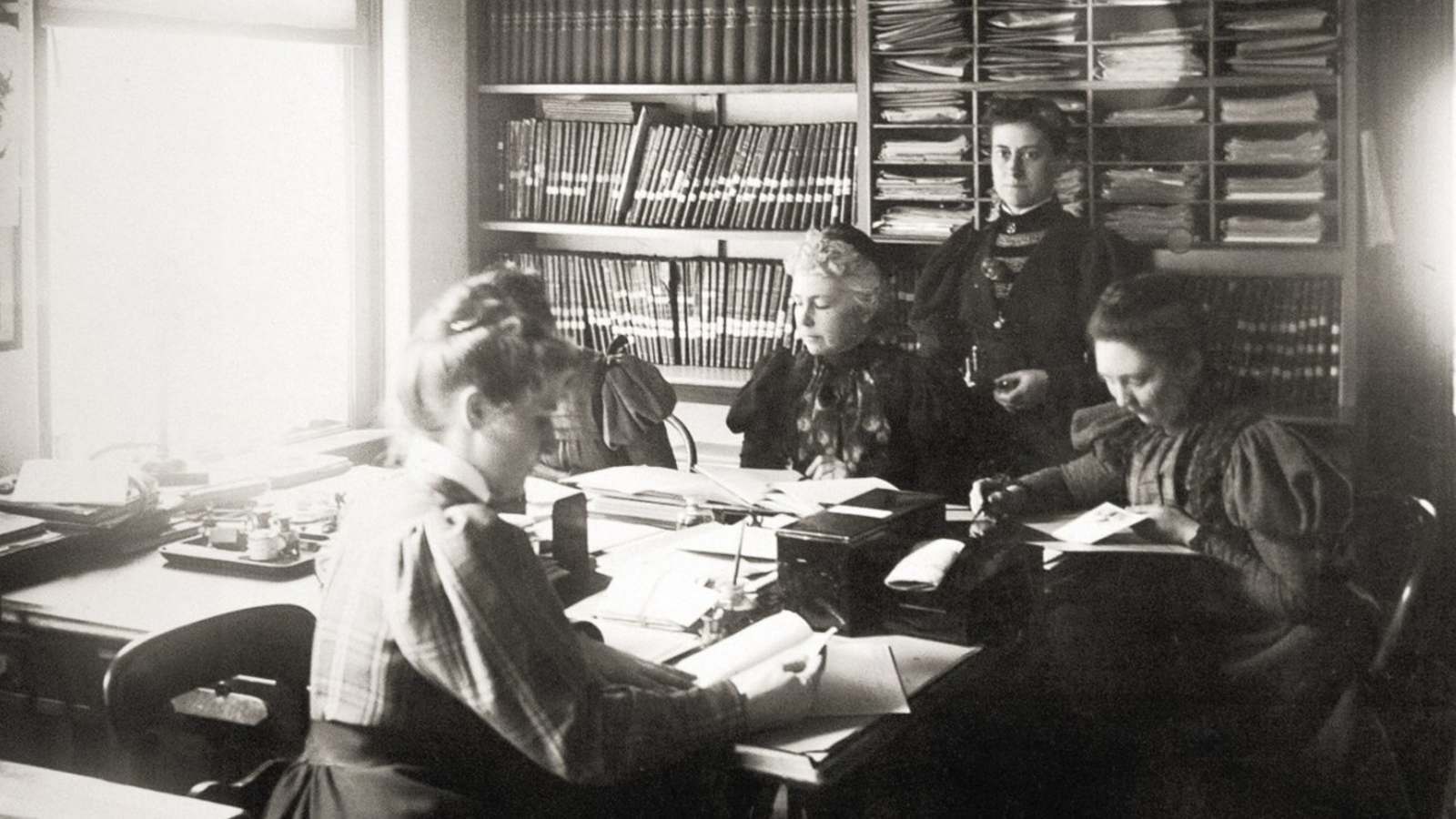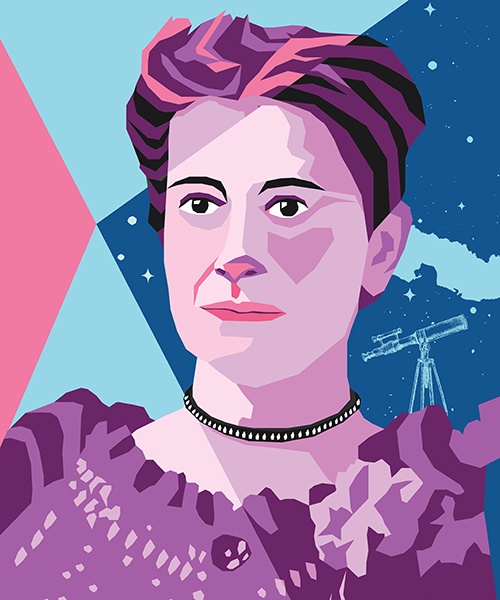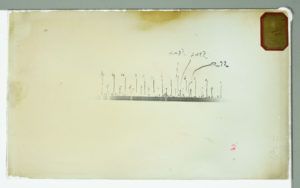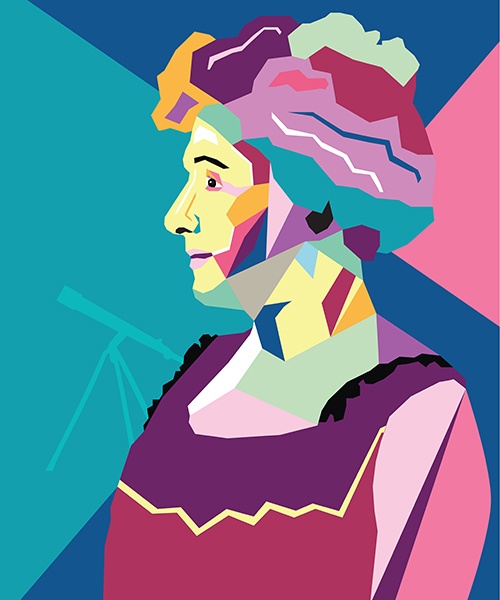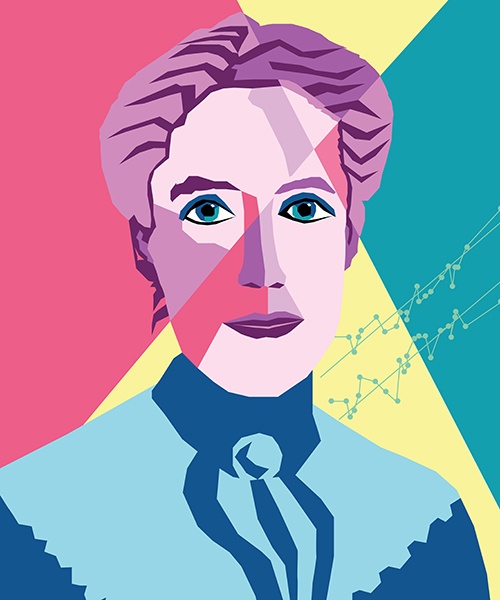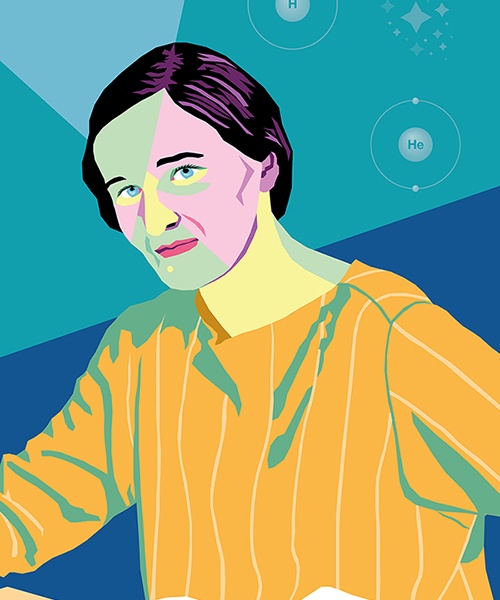In 1850, tinkering scientists lashed a camera to a telescope and took the first photograph of a star. The resulting daguerreotype was blurry and dim, but the flash of insight was clear: photography could be used to record the night sky.
Soon, cameras were built for telescopes and telescopes were built for cameras. Glass plate negatives were taken by astronomers from around the world. Buckled into trunks, packed onto steamships, shipped on mule-back across mountain trails, they came pouring in from everywhere.
Chief among the places they ended up was Harvard College Observatory, where an astronomer named Edward Pickering was attempting to map and measure every star. Harvard would eventually become home to half a million such plates, each one a fragile piece of glass as big as a sheet of paper, fly-specked with tiny grey and black dots and smears: the stars.
Soon, the plates were piling up faster than Pickering and his students could analyze them. Each star’s location needed to be calculated, its brightness evaluated, its spectrum analyzed. Each star had to be monitored over time, to see if it moved in relation to other stars or varied in brightness.
There could be dozens or hundreds of stars on a plate, and the differences between them were tiny. It was squinty, fiddly, expert work, like lacemaking.
Pickering’s student astronomers – who had been promised a career of looking through telescopes, not magnifying glasses – hated it. Legend has it Pickering lost patience with them, exclaiming: “My Scotch maid could do better!”
So, he hired her.
Williamina Fleming, a Scottish immigrant and Pickering’s housekeeper, became the first of about 40 women employed as “computers” at the Harvard Observatory. They are sometimes known collectively as "The Harvard Computers."
Why so many women? There were several reasons. The funder of the star cataloguing project was a woman: amateur astronomer Mary Draper, who had begun a photographic catalogue of the stars with her husband, Henry, and wanted to see it completed after Henry’s death.
The task, long on patience and short on glory, was thought to suit women. Looking at images of the stars – as opposed to looking at the stars – was respectable, indoor, daytime work. Mary Draper knew something of that: on an expedition to view a solar eclipse, she had stayed inside the tent and kept the time.
Another reason, and one not to be overlooked: women were far cheaper to employ. As astronomy entered its first data-driven era, many people were needed to make a human computing cluster. Hiring women made the project affordable.
In one report to the Harvard administration, Pickering described the computers as narrowly trained and narrowly skilled. But in truth, among the women were many remarkable scientists.
In a time when some astronomers thought that distant galaxies were nearby gas clouds, that the stars were made of hot iron, that the features of the moon were caused by insect swarms, these women gathered the data, did the math, and pushed stellar astronomy forward by lightyears. They are the founders of the data-driven science of stellar astronomy as we know it today.
The insights are theirs. The breakthroughs are theirs. They blew the door off the universe. But if you’ve never heard of them, you’re not alone.
Williamina Fleming (1857–1911)
Williamina Fleming could easily have been one of those women who history chews up and spits out. Born in Scotland in 1857, she was a bright child who got off to a brilliant start, but shortly after she married and immigrated to America, her husband abandoned her.
In Scotland, she’d been a teacher. Now, pregnant and desperate, she took what work she could find, landing a job as a maid for Harvard Observatory director Edward Pickering.
At the urging of his wife, Pickering hired Fleming as an administrator at the observatory, where she became the leader of a growing staff of women, and the curator of the photographic plates from which the “computers” were slowly building a record of the stars.
But Fleming was far more than a technical secretary: she was the first expert in stellar spectra.
Before his death, Henry Draper had developed a method for adding a prism to the telescope and camera system to spread out light, so that the image of each star was not a dot, but a smear. (In colour, it would have been a rainbow – a spectrum.)
This dispersed light provided access to new information. Each smear contained lines where the light was absorbed by the atoms of the stars. Science did not yet understand the full meaning of those lines – that would require quantum mechanics – but as Fleming looked at spectrum after spectrum, patterns began to emerge.
Fleming was one of the first to name those patterns and sort stars into them, like Linnaeus sorting animals into their phyla and classes. The result was the Pickering-Fleming system, and, eventually, the publication of the first volume of the Henry Draper Catalogue, in which more than 10,000 stars were classified according to their spectra.
Only Pickering’s name appeared on the front of the Draper Catalogue, though in the introduction he does credit Fleming with “the measurement and classification of all the spectra, and the preparation of the Catalogue for publication” – which is quite a thing to tuck into an acknowledgements page.
Fleming wrote that Pickering “seems to think that no work is too much or too hard for me no matter what the responsibility or how long the hours. But let me raise the question of salary and I am immediately told that I receive an excellent salary as women’s salaries stand.”
Fleming would work at the Harvard Observatory for decades. She catalogued tens of thousands of stars. She discovered white dwarfs and the Horsehead Nebula. She was the first American woman to be elected to the Royal Astronomical Society.
When she died in 1911, she left a gravestone with a one-word epitaph. It reads: Astronomer.
Annie Jump Cannon (1863–1941)
Annie Jump Cannon grew up on the stars. Her mother taught her the constellations, and together they built a little observatory in their attic. Her mother also made sure Annie went to university, where she studied physics and graduated as valedictorian. Some time in this period, she lost most of her hearing, becoming what we now call profoundly deaf.
Cannon didn’t jump right into a career in science, but she hardly retired to the hidden life that was then expected of deaf people. She was a social butterfly who loved parties and had adventures. She journeyed solo through Europe with her camera and published books of travel photography. She became involved in women’s suffrage.
Eventually, she found her way to the Harvard Computers, joining the team in 1896. She quickly proved brilliant at it: she could classify stars almost at a glance and remember which of the tens of thousands of glass plates held which spectra. She would eventually classify more than 350,000 stars – more than anyone else ever has.
She also made a leap forward in the star classification project that Fleming had begun.
One of the most notable and important parts of a star’s spectra is the H1 absorption line: the dark line in the rainbow where (to use the modern understanding) photons of particular energy are absorbed by the hydrogen atoms.
Fleming had classified stars by the strength of their hydrogen lines: how dark and sharp they were. She used the letters of the alphabet, with “A” types having the darkest and most distinct lines. Another of the Harvard Computers, Antonia Maury, developed a different scheme based (among other things) on the width of that line. She used Roman numerals.
Cannon took both schemes, combined them with her own observations, edited them, and developed the stellar classification system still in use today: OBAFGKM. (The reason for the alphabet soup: no one wanted to reprint the Draper Catalogue developed by Fleming, so the star classes were not renamed.)
No one at the time could have known it, but the OBAFGKM sequence turns out to put the stars in order by surface temperature, from blazing blue O-types at greater than 30,000 K, through middling yellow G-types like our sun at about 6,000 K, to brooding red M-types at as little as 3,000 K.
At an international astronomical conference, Cannon was put on the committee on the classification of stellar spectra. “They sat at a long table, these men of many nations, and I was the only woman,” she wrote, and added wryly: “Since I have done almost all of the world’s work in this one branch, it was necessary for me to do most of the talking.”
A century later, astronomers are still listening. Astronomy students meet Cannon’s OBAFGKM system in their first class. It’s that fundamental. And, like the periodic table of elements, it is a powerful key to unlocking deeper ideas about how stars live and die, and even why they shine at all.
Henrietta Swan Leavitt (1868–1921)
Is that star bright and far away, or dim and nearby? Before Henrietta Swan Leavitt, there was no way to know. After Leavitt’s work, astronomers could seek out a certain kind of variable star and tell exactly how far away it was by measuring how often it flashed, a relationship now called Leavitt’s Law.
Astronomers using Leavitt’s Law discovered first that our solar system was not at the centre of the galaxy, and then that our galaxy was one of many galaxies, and finally that the whole vast universe was expanding outward. Devout, deaf, and brilliant, Henrietta Swan Leavitt literally sized up the universe.
Leavitt was born in 1868, the daughter of a minister. She attended the women’s college attached to Harvard University, where she studied the classics, philosophy, fine art, mathematics, and astronomy. Shortly after graduation, she (like Annie Jump Cannon) contracted an illness that took her hearing.
Leavitt had worked for the Harvard Observatory as a student, but to rejoin it as a graduate, she had to work unpaid. Because she had access to some family money, it was deemed unsuitable to pay her. Eventually, she was given a wage of 30 cents an hour – the equivalent of about nine dollars an hour today.
Nevertheless, she joined, and in 1903 she set to work seeking out and studying variable stars: stars whose brightness changes with time. In particular, she studied Cepheid variables, which pulse between two levels of brightness with clockwork regularity. Finding them – comparing the fragile glass plates taken on different nights and looking for minute changes – was slow and tedious work, but Leavitt found 2,400 new Cepheids.
In 1912, she published her landmark discovery: a study of the 25 Cepheids in the Small Magellanic Cloud. Because they were all part of the same cloud, Leavitt knew they were all about the same distance away, and therefore the ones that looked bright really were bright and the ones that looked dim really were dim.
She compared their periods to their brightnesses and discovered “a very simple relation” (the aforementioned Leavitt’s Law) – brighter stars have longer periods. Measure a Cepheid’s period and you can work out exactly how bright it is and, therefore, how far away it must be. (Astronomers of the day already had a robust understanding of how apparent brightness changes with distance.)
Before Leavitt, astronomers could only measure the distance to the very closest stars using parallax. Leavitt’s Law gave them the ruler to restructure the universe. They moved our sun from the centre of our galaxy and our galaxy from the centre of the universe. They measured first the galaxy and then the distance to the next galaxy, proving that Andromeda, once thought to be a cloud of dust inside our own galaxy, is in fact a giant spiral of a trillion solar masses, 2,500,000 lightyears away.
Edwin Hubble, who did the Andromeda measurement, thought Leavitt should have a Nobel Prize. He wasn’t alone: she was, in fact, nominated – whereupon her nominators discovered that the woman who had been overlooked her whole life had died of cancer three years earlier, at the age of 53.
Cecilia Payne-Gaposchkin (1900–1979)
As late as the 1920s, astronomers assumed that the whole universe was made of the same hundred or so kinds of atoms found on Earth. The rocky stars, they thought, glow because they are hot, like pokers heated in a forge.
It sounds silly now, but it’s not a terrible model. After all, why should the chemistry of stars be different than the chemistry of Earth? It did, however, present a puzzle: If stars were made up of a hundred or so different kinds of atoms, in potentially millions of chemical combinations, then why were there only seven kinds of stars – O, B, A, F, G, K, and M?
Enter Cecilia Payne – the woman who discovered what stars are made of.
Cecilia Payne was born in England in 1900. She read physics and astronomy at Cambridge but came away without a degree – Cambridge didn’t grant degrees to women. So, in 1923, she emigrated to the United States to study at Radcliffe, the women’s college attached to Harvard, one of the only academic institutions that then granted physics degrees to women. In 1925, she became the first person to earn a PhD at Radcliffe, with what one eminent contemporary described as “the most brilliant PhD thesis ever written in astronomy.”
It’s still known as the most brilliant thesis ever written in astronomy.
Like Fleming and Cannon before her, Payne studied stellar spectra. She knew – they all knew – that the spectra should be a window into the chemistry of stars. The idea that a scientist could find out what a gas was made of by passing light through it and looking at the absorption lines had been known since the previous century. It was the reason Draper had added a prism to a telescope in the first place.
Payne’s big idea was to reconsider stellar spectra entirely – looking for clues not about chemistry, but about temperature. Using the brand-new tools of quantum mechanics, she (as she wrote) “set out to make quantitative the qualitative information inherent in the Henry Draper system.”
In 1920, a scientist named Meghnad Saha had developed a set of equations that used quantum mechanics to push the study of spectra forward. If you knew which gas you were passing light through, you could use the Saha equations to determine its temperature. Applying this to stellar spectra was a huge challenge, not only because the gases in what were then called “stellar atmospheres” were unknown, but because the Saha equations are a daunting wall of mathematics.
Payne set to work. What she uncovered within little more than a year of mathematical excavation would shake the universe of iron stars to its core. The seven different spectrograph patterns named by Fleming and Cannon perfectly corresponded to seven groups of hydrogen ions, each of which could only exist in its own temperature range.
The stars, Payne’s work ultimately showed, are all made of hydrogen plus a dash of helium, with a handful of heavier elements (which astronomers call metals) in trace amounts – less than one part per million.
She was still a graduate student. Her conclusions went against all the prevailing wisdom. Her advisor sent her draft thesis to a senior astronomer, Henry Norris Russell (the ‘R’ in HR diagrams of stars).
“It is clearly impossible that hydrogen should be a million times more abundant than metals,” said Russell, who convinced Payne to tone down her thesis, writing of her own results that they were unlikely, and probably a measurement error.
“I had given in to Authority when I believed I was right,” she would write later. “That is another example of How Not To Do Research. I note it here as a warning to the young. If you are sure of your facts, you should defend your position.”
A few years later, Russell published nearly the same results that Payne presented in her thesis, and barely cited her. He is sometimes still credited with discovering what stars are made of. His HR diagram has the stellar temperatures – Payne’s temperatures – along one axis. It was years before the publication of Payne’s book, Stellar Atmospheres, would bring her public recognition.
In a way, Payne marks the end of the Harvard Computers – the transition from Pickering’s “narrowly trained” women, who travelled one of the only paths available to turn themselves into scientists, to women like Payne who followed the academic path previously open only to men.
Not that it was a smooth road. Payne – who married and became Payne-Gaposchkin – continued her career at Harvard, but as a “technical assistant,” not a professor, even though she taught courses and supervised graduate students. Finally, in 1956, more than 30 years after her great discovery, she became the chair of the astronomy department at Harvard – cracking astronomy’s glass ceiling and opening new paths for women to reach the stars.
“Young people, especially young women, often ask me for advice,” she wrote. “Here it is, valeat quantum. Do not undertake a scientific career in quest of fame or money. There are easier and better ways to reach them. Undertake it only if nothing else will satisfy you; for nothing else is probably what you will receive. Your reward will be the widening of the horizon as you climb.”
Further exploration
- The Forces of Nature poster series: Download free high-resolution portraits of the women in this article, and those of other great women scientists.
- The Forces of Nature poster series: Download free high-resolution portraits of the women in this article, and those of other great women scientists.
- Deep Dive: For more about the Harvard Computers, Perimeter recommends the book The Glass Universe, by Dava Sobel.
About PI
Perimeter Institute is the world’s largest research hub devoted to theoretical physics. The independent Institute was founded in 1999 to foster breakthroughs in the fundamental understanding of our universe, from the smallest particles to the entire cosmos. Research at Perimeter is motivated by the understanding that fundamental science advances human knowledge and catalyzes innovation, and that today’s theoretical physics is tomorrow’s technology. Located in the Region of Waterloo, the not-for-profit Institute is a unique public-private endeavour, including the Governments of Ontario and Canada, that enables cutting-edge research, trains the next generation of scientific pioneers, and shares the power of physics through award-winning educational outreach and public engagement.
You might be interested in

